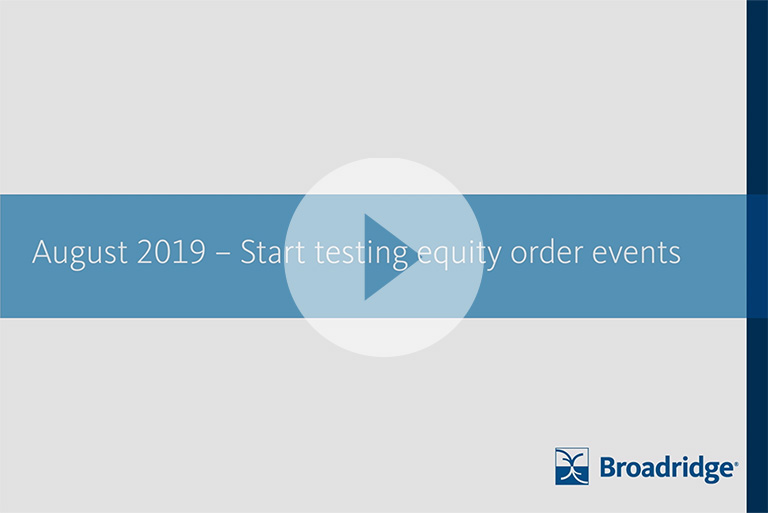Preparing for 2019 CAT Industry Testing
Additional Broadridge resources:
View our Contact Us page for additional information.
One of our sales representatives will email you about your submission.
Welcome back, {firstName lastName}.
Not {firstName}? Clear the form.
Want to speak with a sales representative?
Your sales rep submission has been received. One of our sales representatives will contact you soon.
Our representatives and specialists are ready with the solutions you need to advance your business.
Want to speak with a sales representative?
| Table Heading | |
|---|---|
| +1 800 353 0103 | North America |
| +442075513000 | EMEA |
| +65 6438 1144 | APAC |
Your sales rep submission has been received. One of our sales representatives will contact you soon.
Want to speak with a sales representative?
| Table Heading | |
|---|---|
| +1 800 353 0103 | North America |
| +442075513000 | EMEA |
| +65 6438 1144 | APAC |
Nos représentants et nos spécialistes sont prêts à vous apporter les solutions dont vous avez besoin pour faire progresser votre entreprise.
Vous voulez parler à un représentant commercial?
| Table Heading | |
|---|---|
| +1 800 353 0103 | Amérique du Nord |
| +1 905 470 2000 | Canada Markham |
| +1 416 350 0999 | Canada Toronto |
Votre soumission a été reçue. Nous communiquerons avec vous sous peu.
Vous souhaitez parler à un commercial ?
| Table Heading | |
|---|---|
| +1 800 353 0103 | Amérique du Nord |
| +1 905 470 2000 | Canada Markham |
| +1 416 350 0999 | Canada Toronto |
Representative Orders
CAT covers all street-side orders – including all proprietary orders for non-FINRA members.
| OATS | CAT |
| Only applicable to FINRA members | Applies to every U.S. registered broker-dealer |
| Does not capture proprietary orders | Clearly deciphers proprietary vs. representative (customerdriven) orders |
| Requires multiple requests to track down representative orders | FDID/CCID links avoid the need for multiple requests to research activity |
Reportable Data & Events
New reportable data and event types will expose resource principal, order activity or aggregated average price order attributes.
| OATS | CAT |
| No need to report market making with street-side vs. principal | Eliminates market making exclusions |
| Recording of electronic quotes are limited in scope | Includes OTC equities quoting activity and electronic quotes (exchanges and NMS) |
| Requires only one timestamp on manual events | Requires capture and report of two timestamps on manual events |
Accuracy of Reporting
Firms must have a clear understanding of what they are reporting when the move from OATS to CAT occurs – which may require different approaches.
| OATS | CAT |
| Very high compliance rate of more than 99% | Will use FINRA’s surveillance patterns from OATS data |
| High accuracy relied on heavily for FINRA surveillance | Accuracy will rely on achieving the same high compliance rates as OATS |
| Useful for comparing and contrasting with CAT data and surveillance results | Conducting early and frequent testing will drive accurate reporting |
Welcome back, {firstName lastName}.
Not {firstName}? Clear the form.
Broadridge, a global Fintech leader with more than $6 billion in revenues, provides the critical infrastructure that powers investing, corporate governance and communications to enable better financial lives. We deliver technology-driven solutions that drive digital transformation for our clients and help them get ahead of today’s challenges to capitalize on what’s next.
